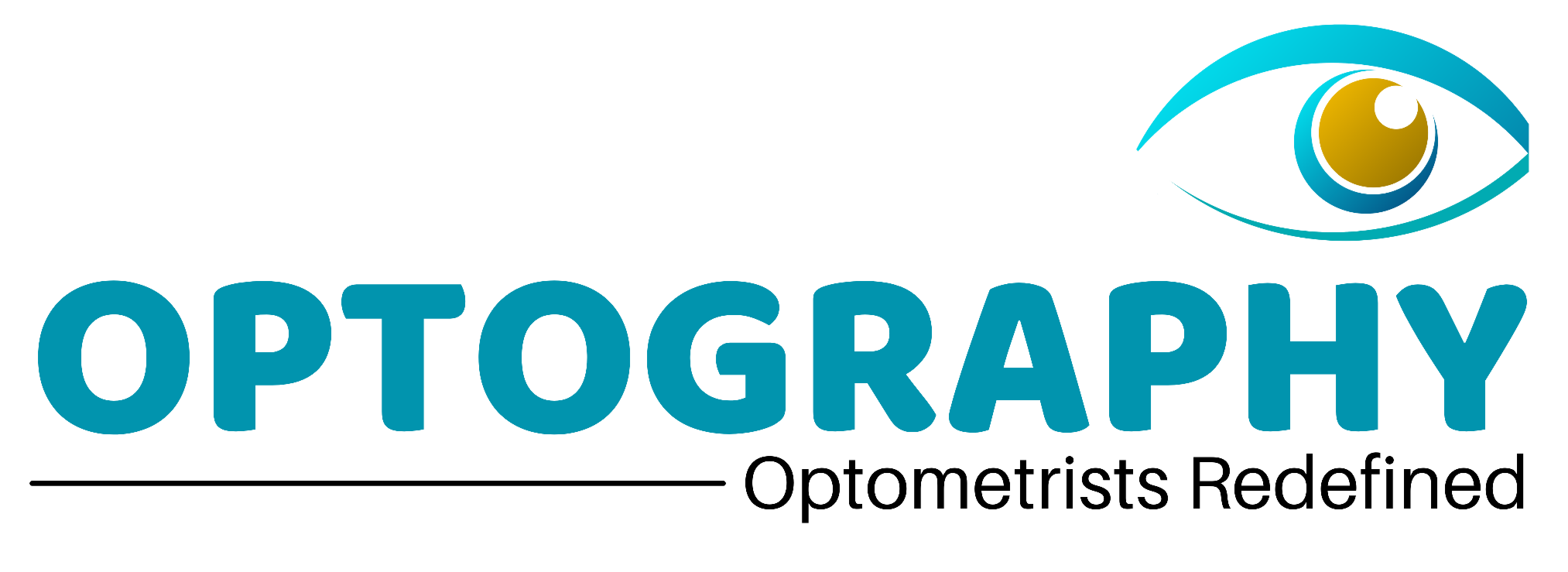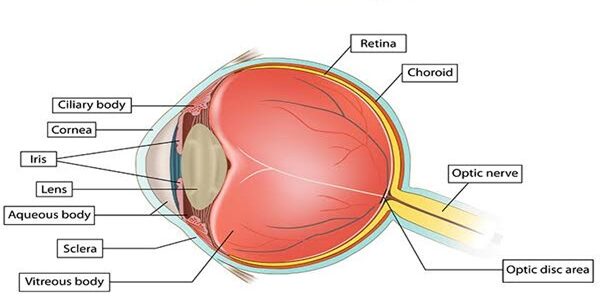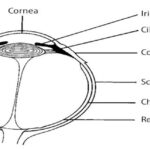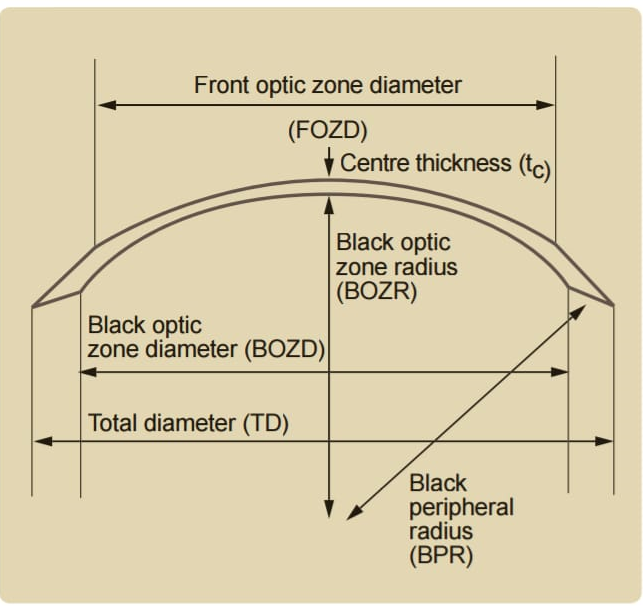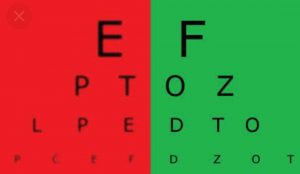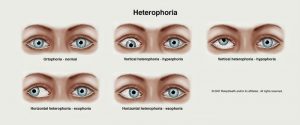The human eye is an organ of the sensory nervous system that reacts to visible light
and allows the use of visual information for various purposes including seeing things,
keeping balance, and maintaining circadian rhythm.
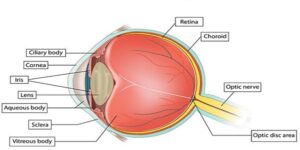
The eye can be considered as a living optical device. It is approximately spherical in
shape, with its outer layers, such as the outermost, white part of the eye (The sclera)
and one of its inner layers (The pigmented Choroid) keeping the eye essentially light
tight except on the eye’s optic axis. In order, along the optic axis, the optical
components consist of a first lens (The Cornea—the clear part of the eye) that accounts
for most of the optical power of the eye and accomplishes most of the focusing of light
from the outside world; then an aperture (The Pupil) in a diaphragm (The Iris:- the
coloured part of the eye) that controls the amount of light entering the interior of the eye;
then another lens (The Crystalline lens) that accomplishes the remaining focusing of
light into images; and finally a light-sensitive part of the eye which is (The Retina),
where the images fall and are processed. The retina makes a connection to the brain
via the optic nerve. The remaining components of the eye keep it in its required shape,
nourish and maintain it, and protect it.
Three types of cells in the retina convert light energy into electrical energy used by the
nervous system: rods respond to low intensity light and contribute to perception of low-
resolution, black-and-white images; cones respond to high intensity light and contribute
to perception of high-resolution, coloured images; and the recently discovered
photosensitive ganglion cells respond to a full range of light intensities and contribute to
adjusting the amount of light reaching the retina, to regulating and suppressing the
hormone melatonin, and to entraining circadian rhythm.
HOW DIFFERENT LIGHT AFFECTS OUR EYES

There are many types of electromagnetic radiation, one of which is visible light. This is
the only type of light that our eyes can see on the visible light spectrum. Some of those
light waves can damage the eyes over time. Lights from the sun in the form of ultraviolet
light rays can burn the skin, the eyes, and damage your vision. Only the proper eyewear
can protect against this light. Blue light as well as a silent killer to your vision and light
that many patients are unaware of. This light is found in many electronic devices that
many patients use each day. Learn about the different lights in the visible light spectrum,
what lights to avoid and how you can protect your vision from damage today.
The Visible Light Spectrum
The visible light spectrum can tell you a lot about what it is just in its name: it’s a
spectrum of light that we can visibly see. This spectrum is made up of all the colors of
the rainbow. On the left, you have red light waves. If we were moving right along a line,
you would then have orange light, yellow, green, blue, and then violet, with all of the
other colors somewhere in between. The colors we see naturally sit along the visible
light spectrum according to how long the wavelengths of energy are.
Red has the longest wavelength, while ultraviolet light has the shortest wavelength. This
means that red light doesn’t carry a lot of energy at once, while UV light carries a ton.
Sir Isaac Newton discovered that objects don’t inherently have color. An object’s surface
actually absorbs some light rays, while reflecting others, which is how we perceive color.
We see an object’s color based on the light waves it reflects. That reflection then tells
our brain what color we are interpreting from a certain object. The Color White is a
mixture of all of the colors (or a reflection of all of them), while black is the absorption of
all the colors (none are reflected).
Ultraviolet Radiation
Ultraviolet Radiation is known as UV light for short. This is the light that comes from the
sun and the same light that can burn your skin and your eyes without proper sunscreen
and eye protection. Many people know that UV light can damage the skin, but most
don’t think about the damage this light could cause to the eyes. There are actually 3
different types of ultraviolet light, known as UV-C, UV-A, and UV-B. UV-A and UV-B are
the light waves that affect the skin and eyes. UV-C light thankfully gets absorbed by the
ozone layers, so it’s not one you have to worry about.
Each light sits somewhere along the visible light spectrum. Its placement determines it’s
the wavelength and its energy. We mentioned that UV light has the shortest wavelength.
That means it has the highest energy, which makes it highly damaging to your eyes.
Never look directly at the sun or you could do permanent damage to your vision! Always
wear sunglasses that block out damaging UV rays. You will know if sunglasses do just
that because they will say “100% UV protection” or something similar. Many dollar-store
glasses and even over-the-counter sunglasses do not carry this protection. You can find
proper sunglasses through an optometrist or your eye doctor. These are the best forms
of protective eyewear you can find that can even be custom-made to fit your vision
prescription.
Blue Light And Your Eyes
Blue light is next to ultraviolet light on the visible light spectrum and is also a light you
want to watch out for. Some patients realize the damage UV light can do to their eyes
but have no clue that blue light is damaging their vision on an everyday basis. Blue light
rests next to UV light on the visible light spectrum, so it has a high amount of energy as
well. We receive some of this light from the sun in healthy doses. That amount of blue
light helps to stabilize our circadian rhythm, or what helps the body and mind to be able
to sleep at night. Too much blue light can disrupt the sleep cycle or cause a myriad of
other problems.
Blue Light can cause the Digital Eye Strain. This is also known as “Computer Vision
Syndrome”. Both define the eye and vision-related conditions that stem from the hours

your eyes are focused on a screen, whether that be a computer, tablet, or cell phone.
These are some of the most common sources that cause damage to the patient’s eyes.
Other sources include laptops, electronic devices, LED and fluorescent lighting, and the
sun. Over time, too much blue light can cause macular degeneration. This is a serious
eye condition that damages your retina to the point where you eventually go blind.
Millions of people in the future are expected to develop macular degeneration because
of the high use of electronic devices that use blue light.
Blue Light can cause the Digital Eye Strain. This is also known as “Computer Vision
Syndrome”. Both define the eye and vision-related conditions that stem from the hours
your eyes are focused on a screen, whether that be a computer, tablet, or cell phone.
These are some of the most common sources that cause damage to the patient’s eyes.
Other sources include laptops, electronic devices, LED and fluorescent lighting, and the
sun. Over time, too much blue light can cause macular degeneration. This is a serious
eye condition that damages your retina to the point where you eventually go blind.
Millions of people in the future are expected to develop macular degeneration because
of the high use of electronic devices that use blue light.
The Iris serves as your eye’s main defense against bright light. This is the colored part
of your eye responsible for reducing and enlarging the size of your pupil. When intense
light rays reach your eye, the iris responds by constricting the pupil, thus protecting the
retina and helping it process the incoming image better. The opposite occurs in low light
when the iris dilates the pupil to allow as much light in as possible.
Can Bright Light Damage Your Vision?
In short, yes, staring at bright lights can damage your eyes. When the retina’s light-
sensing cells become over-stimulated from looking at a bright light, they release
massive amounts of signaling chemicals, injuring the back of the eye as a result.
The sun shines with such intensity that staring directly at it for just a few seconds can
cause permanent retinal damage. Chronic exposure to UV rays over many weeks,
months or years can also harm the macula, cornea and lens. A damaged macula leads
to macular degeneration. A “sunburned” cornea can cause blurry vision and loss of
eyesight. A damaged lens may develop a cataract, or clouding of the lens that blurs
vision.
Blue light, even at moderate intensity levels, can damage your retinas slowly over time.
Blue light has shorter wavelengths than warmer light, so it has more energy. Prolonged
exposure may increase the risk of age-related macular degeneration (AMD). Sunlight is
the most prominent source of blue light, but other examples include fluorescent lights,
LEDs, TVs, computer monitors and Smartphone screens.
How to Treat and Prevent Eye Problems from Bright Light
Protect your vision with these tips:
Choose glasses with anti-reflective lenses to reduce glare from bright lights.
Wear dark-tinted sunglasses and a brimmed hat while outside. Polarized sunglasses
with UV protection further shield your eyes from the effects of blue light and ultraviolet
rays.
Decrease daily screen time and take frequent breaks to rest your eyes.
Turn on your computer’s “night light” feature to decrease the amount of blue light the
screen emits.
Wear blue-blocking computer glasses with yellow-tinted lenses that ease digital
eyestrain.
Choose CFLs and LEDs that emit “warm” light.
If you require cataract surgery, seek blue-blocking intraocular lens (IOL) implants to
protect your retinas the same way sunglasses do.
